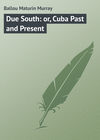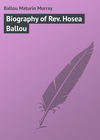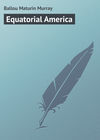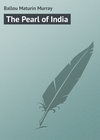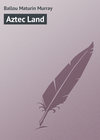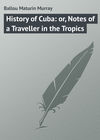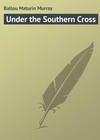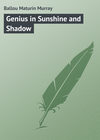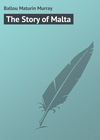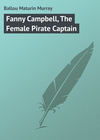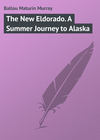Buch lesen: «Due South: or, Cuba Past and Present»
PREFACE
The public favor accorded to a late volume by the author of these pages, entitled "Due West; or Round the World in Ten Months," has suggested both the publication and the title of the volume in hand, which consists of notes of a voyage to the tropics, and a sojourn in Cuba during the last winter. The endeavor has been to present a comprehensive view of the island, past and present, and to depict the political and moral darkness which have so long enshrouded it. A view of its interesting inhabitants, with a glance at its beautiful flora and vegetation generally, has been a source of such hearty enjoyment to the author that he desires to share the pleasure with the appreciative reader. The great importance of the geographical position of the island, its present critical condition, and the proposed treaty of commerce with this country, together render it at present of unusual interest in the eyes of the world. If possible, Cuba is more Castilian than peninsular Spain, and both are so Moorish as to present a fascinating study of national characteristics.
M. M. B.
CHAPTER I
Departure. – On Board Ship. – Arrival at Nassau. – Capital of the Bahamas. – Climate. – Soil. – Fruits and Flowers. – Magic Fertility. – Colored Population. – The Blockade Runners. – Population. – Products. – A Picturesque Local Scene. – Superstition. – Fish Story. – The Silk-Cotton Tree. – Remarkable Vegetation. – The Sea Gardens. – Marine Animal Life. – The Bahama Banks. – Burial at Sea. – Venal Officials. – Historical Characters. – The Early Buccaneers. – Diving for Drinking-Water.
We left Boston in a blustering snow-storm on the morning of February 25th, and reached New York city to find it also clothed in a wintry garb, Broadway being lined on either side of its entire length with tall piles of snow, like haycocks, prepared for carting away during the coming night. Next morning, when we drove to the dock to take passage on board the steamship Cienfuegos, the snow-mounds had all been removed. The mail steamer sailed promptly at the hour assigned, hauled out into the stream by a couple of noisy little tugs, with two-inch hawsers made fast to stem and stern. Before sunset the pilot left the ship, which was then headed due south for Nassau, N. P., escorted by large fields of floating ice, here and there decked with lazy snow-white sea-gulls. The sharp northwest wind, though blustering and aggressive, was in our favor, and the ship spread all her artificial wings as auxiliary to her natural motor. We doubled Cape Hatteras and Cape Lookout well in towards the shore, sighting on the afternoon of the fourth day the Island of Abaco, largest of the Bahama Isles, with its famous "Hole in the Wall" and sponge-lined shore. The woolen clothing worn when we came on board ship had already become oppressive, the cabin thermometer indicating 72° Fahrenheit. With nothing to engage the eye save the blue sky and the bluer water, the most is made of every circumstance at sea, and even trivial occurrences become notable. The playful dolphins went through their aquatic pantomime for our amusement. Half a dozen of them started off just ahead of the cutwater, and raced the ship for two hours, keeping exactly the same relative distance ahead without any apparent effort. Scores of others leaped out of the water and plunged in again in graceful curves, as though they enjoyed the sport. A tiny land bird flew on board, and was chased all over the ship by one or two juveniles until caught, panting and trembling with the unwonted exertion. Presently it was given its liberty, partook freely of bread crumbs and drank of fresh water, then assumed a perch aloft, where it carefully dressed its feathers, and after thanking its entertainers with a few cheerful notes it extended its wings and launched out into space, no land being in sight. The broken mainmast of a ship, floating, with considerable top hamper attached, was passed within a cable's length, suggestive of a recent wreck, and inducing a thousand dreary surmises. At first it was announced as the sea serpent, but its true nature was soon obvious. At midnight, March 1st, Nassau light hove in sight, dimmed by a thin, soft haze, which hung over the water, and through which the light, by some law of refraction, seemed to be coming out to meet the ship. Overhead all was bright, – almost dazzling with unnumbered stars and familiar constellations, like silver spangles on a background of blue velvet. We anchored off the island an hour before daylight, the harbor being too shallow to admit the ship. A forbidding sand bar blocks the entrance, inside of which the water is but fifteen feet deep. Indeed, Nassau would have no harbor at all were it not that nature has kindly placed Hog Island in the form of a break-water, just off the town. The vibrating hull of the Cienfuegos was once more at rest; the stout heart-throbs, the panting and trembling, of the great engine had ceased; the wheelhouse and decks were deserted, and one was fain to turn in below for a brief nap before landing on this the most populous of the Bahamas.
The island, which was settled by Europeans as early as 1629, embraces nearly a hundred square miles, forming an oasis in the desert of waters. It is sixteen miles long and about one half as wide, containing fourteen thousand inhabitants, more or less, who can hardly be designated as an enterprising community. On first landing, everything strikes the visitor as being peculiarly foreign, – almost unique. The town is situated on the northerly front of the island, extending along the shore for a couple of miles, and back to a crest of land which rises to nearly the height of a hundred feet. This elevation is crowned by the residence of the English Governor-General, in front of which may be seen a colossal but not admirable statue of Columbus. The town boasts a small public library, a museum, theatre, several small churches, a prison, a hospital, and a bank. The government maintains one company of infantry, composed of black men, officered by whites. It must be admitted that they present a fine military appearance when on parade. Nassau has long been a popular resort for invalids who seek a soft, equable climate, and as it lies between the warm South Atlantic and the Gulf Stream it is characterized by the usual temperature of the tropics. There seemed to be a certain enervating influence in the atmosphere, under the effects of which the habitués of the place were plainly struck with a spirit of indolence. The difference between those just arrived and the regular guests of the Victoria Hotel, in this respect, could not fail to be observed. The languidly oppressive warmth imparts a certain softness to manners, a voluptuous love of idleness, and a glow to the affections which are experienced with less force at the North. Neither snow nor frost is ever encountered here, and yet it is as near to Boston or New York as is the city of Chicago. The temperature, we are told, never falls below 64° Fahrenheit, nor rises above 82°, the variations rarely exceeding five degrees in twenty-four hours. In Florida a change of twenty degrees is not unusual within the period of a single day. The thermometer stood at 73° on the first day of March, and everything was bathed in soft sunlight.
It is somewhat singular that an island like New Providence, which is practically without soil, should be so remarkably productive in its vegetation. It is surrounded by low-lying coral reefs, and is itself composed of coral and limestone. These, pulverized, actually form the earth out of which spring noble palm, banana, ceiba, orange, lemon, tamarind, almond, mahogany, and cocoanut trees, with a hundred and one other varieties of fruits, flowers, and woods, including the bread-fruit tree, that natural food for indolent natives of equatorial regions. Of course in such a soil the plough is unknown, its substitutes being the pickaxe and crowbar. However, science teaches us that all soils are but broken and decomposed rock, pulverized by various agencies acting through long periods of time. So the molten lava which once poured from the fiery mouth of Vesuvius has become the soil of thriving vineyards, which produce the priceless Lachryma Christi wine. This transformation is not accomplished in a lifetime, but is the result of ages of slow disintegration.
Among other flowering trees, some strikingly beautiful specimens of the alligator-pear in full bloom were observed, the blossom suggesting the passion-flower. While our favorite garden plants at the North are satisfied to bloom upon lowly bushes, at the South they are far more ambitious, and develop into tall trees, though sometimes at the partial expense of their fragrance. The air was full of sweet perfume from the white blossoms of the shaddock, contrasting with the deep glossy green of its thick-set leaves, the spicy pimento and cinnamon trees being also noticeable. With all this charming floral effect the bird melody which greets the ear in Florida was wanting, though it would seem to be so natural an adjunct to the surroundings. Nature's never-failing rule of compensation is manifested here: all the attractions are not bestowed upon any one class; brilliancy of feathers and sweetness of song do not go together. The torrid zone endows the native birds with brilliant plumage, while the colder North gives its feathered tribes the winning charm of melody.
The soil of these Bahama Islands, composed of such unpromising ingredients, shows in its prolific yield how much vegetation depends for its sustenance upon atmospheric air, especially in tropical climes. The landlord of the Victoria Hotel told us, as an evidence of the fertility of the soil, that radish seeds which were planted on the first day of the month would sufficiently mature and ripen by the twenty-first – that is in three weeks – for use upon the table; and also that potatoes, tomatoes, cucumbers, and melons were relatively expeditious in ripening here after planting. Our mind reverted to the jugglers of Madras and Bombay, who made an orange-tree grow from the seed, and bear fruit before our very eyes, at a single sitting.
The luscious pineapple, zapota, mango, pomegranate, guava, star-apple, citron, custard-apple, mammee, and other fruits abound. The profuseness and variety of beautiful ferns and orchidaceous plants will also be sure to attract the attention of the Northern visitor. The rocky formation of the soil produces good natural roads, so that a long drive in the environs of Nassau is like a pleasure excursion over a well-macadamized thoroughfare. We were told of a delightful drive of fifteen miles in length which follows the sea beach the whole distance, but did not find time to test its attractions, though strongly tempted by the excellence of the roads. Here, as in other tropical regions, each month has its special floral display, although there are many, and indeed a majority, of the plants which continue to flower all the year round. We observed that the stone walls and hedges were now and again covered for short spaces with the coral-vine, whose red blossoms, so pleasing to the eye, emit no odor. The yellow jasmine was dazzlingly conspicuous everywhere, and very fragrant. Red and white roses, various species of cacti, and tube-roses bloomed before the rude thatched cabins of the negroes in the environs, as well as in the tiny front gardens of the whites in the streets of the town; while red, white, and pink oleanders grew as tall as trees, and flower here every month in the year. The night-blooming cereus abounds, opening just at sunset, and closing again at break of day. The outside leaves of this poetical flower are of a pale green, the inner ones of a pure wax-like white, and the petals light yellow. Complete, it is about eight inches long, and from twelve to fifteen in circumference.
While we drove through the suburbs, slatternly, half-clothed family groups of negroes watched us with curious eyes, and on the road aged colored men and women were occasionally met, who saluted us with grave dignity. No one seemed to be at work; sunshine was the only perceptible thing going on, ripening the fruits and vegetables by its genial rays, while the negroes waited for the harvest. Like the birds, they had no occasion to sow, but only to pluck and to eat. There was, both in and out of the town, a tumble-down, mouldy aspect to the dwellings, which seemed to be singularly neglected and permitted to lapse into decay. With the exception of the town of Nassau, and its immediate environs, New Providence is nearly all water and wilderness; it has some circumscribed lakes, but no mountains, rivers, or rivulets. The island is justly famous for the beauty and variety of its lovely flowers. It is true that the rose is not quite equal in color, development, and fragrance to ours of the North; Nature has so many indigenous flowers on which to expend her liberality that she bestows less attention upon this, the loveliest of them all. The Cherokee rose, single-leafed, now so rare with us, seems here to have found a congenial foreign home. In the suburbs of Nassau are many attractive flowers, fostered only by the hand of Nature. Among them was the triangular cactus, with its beautiful yellow blossom, like a small sunflower, supported by a deep green triangular stem.
The pendulous cactus was also hanging here and there on walls and tree trunks, in queer little jointed, pipe-stem branches. The royal palm, that king of tropical vegetation, is not very abundant here, but yet sufficiently so to characterize the place. Its roots resemble those of asparagus, and are innumerable. Another peculiarity of the palm is that it starts a full-sized trunk; therefore, not the diameter, but the height, determines its age, which is recorded by annual concentric rings clearly defined upon its tall, straight stem.
During the late civil war in the United States, when blockade runners made this place a port of call and a harbor for refitting, it was by English connivance practically a Confederate port. The officers and sailors expended their ill-gotten wealth with the usual lavishness of the irresponsible, the people of Nassau reaping thereby a fabulous harvest in cash. This was quite demoralizing to honest industry, and, as might be expected, a serious reaction has followed. Legitimate trade and industry will require years before they can reassert themselves. Sudden and seeming prosperity is almost sure to be equally transitory. We were told that, during the entire period in which the Confederates resorted here under the open encouragement and protection of England, the town was the scene of the most shameful drunken orgies from morning until night. Lewdness and crime were rampant. Officers played pitch-penny on the veranda of the Victoria Hotel with gold eagles, and affiliated openly with negresses. The evil influence upon all concerned was inevitable, and its poisonous effect is not yet obliterated.
Three quarters of the present population are negroes, but of course all trace of the aborigines has disappeared. It is curious and interesting to know what Columbus thought of them. He wrote to his royal mistress, after having explored these Bahamas, as follows: "This country excels all others as far as the day surpasses the night in splendor; the natives love their neighbors as themselves: their conversation is the sweetest imaginable, and their faces are always smiling. So gentle and so affectionate are they that I swear to your highness there is no better people in the world."
The negroes are mostly engaged in cultivating patches of pineapples, and yams, sweet potatoes, and other vegetables; a large number of the males employ themselves also in fishing and gathering sponges. It will be remembered that from this locality comes the principal supply of coarse sponge for Europe and America. There is also a considerable trade, carried on in a small way, in fine turtle-shell, which is polished in an exquisite manner, and manufactured by the natives into ornaments. Though the Bahama sponges are not equal to those obtained in the Mediterranean, still they are marketable, and Nassau exports half a million dollars' worth annually. It is a curious fact that sponges can be propagated by cuttings taken from living specimens, which, when attached to a piece of board and sunk in the sea, will increase and multiply. Thus the finest Mediterranean specimens may be successfully transplanted to the coral reefs of these islands, the only requisite to their sustenance seeming to be a coralline shore and limestone surroundings. Another important industry which gives employment to a considerable number of the inhabitants is the canning of pineapples, a process which is equivalent to preserving them for any length of time. One firm on Bay Street, as we were informed, canned and exported nearly a million of pines in one season, lately; and another, engaged in the fresh-fruit trade, shipped to the States fifteen cargoes of pines in one year, besides many thousands of cocoanuts. These are not all raised in Nassau, but this port is made the headquarters for collecting and disposing of the fruit grown upon what are termed the out-islands, as well as marketing the large product of its own soil. It is but a short drive inland to the extensive pineapple fields, where the handsome fruit may be seen in the several stages of growth, varying according to the season of the year. If intended for exportation, the fruit is gathered green; if for canning purposes, the riper it is the better. The visitor will also be impressed by the beauty and grace of the cocoanut trees, their pinnate leaves often a hundred feet from the ground, notwithstanding the bare cylindrical stem attains a thickness of only two feet.
The Royal Victoria Hotel, though bearing a loyal name, is kept by an American, and is a very substantial, capacious building, composed of native limestone, four stories high, three of which are surrounded by wide piazzas, which afford the shade so necessary in a land of perpetual summer. The native stone of which the island is composed is so soft when first quarried that it can easily be cut or sawed into any shape desired, but it hardens very rapidly after exposure to the atmosphere. The hotel will accommodate three hundred guests, and is a positive necessity for the comfort and prosperity of the place. It was built and is owned by the British government, who erected it some twenty-five years since. At the time of our arrival there was gathered under the lofty Moorish portico of the hotel a most picturesque group of negroes, of both sexes and of all ages, their ebony faces forming a strong contrast to the background of well-whitewashed walls. Some of the women were dressed in neat calico gowns, and wore broad-brimmed straw hats; some were in rags, hatless, shoeless, and barelegged; some had high-colored kerchiefs wound turban-like about their woolly heads; and some wore scarlet shawls, the sight of which would have driven a Spanish bull raving mad. There were coquettish mulatto girls with bouquets for sale, and fancy flowers wrought of shells; these last of most exquisite workmanship. Specimens of this native shell-work were sent to the Vienna Exposition, where they received honorable mention, and were afterwards purchased and presented to the Prince of Wales. Old gray-haired negroes, with snow-white beards on a black ground, offered fruits in great variety, – zapotas, mangoes, pineapples, and grape-fruit. Others had long strings of sponges for sale, wound round their shoulders like huge snakes; some of these were good, but many were utterly useless. No one knows this better than the cunning negroes themselves, but strangers, only touching at Nassau, they do not expect to see again, and there is proverbially cheating in all trades but ours. A bright, thrifty-looking colored woman had spread out her striped shawl upon the ground, and on this arrayed a really fine collection of conch-shells for sale, delicately polished, and of choice shapes. When first brought to the surface by the divers they are not infrequently found to contain pearls imbedded in the palatable and nutritious meat. These pearls are generally of a pinkish hue, and greatly prized by the jewelers. Now and then a diver will realize a hundred dollars for one of them. From the conch-shell also come the best shell cameos. A smart half-breed offered canes of ebony, lignum vitæ, lance, and orange wood, all of native growth. He was dressed in a white linen jacket, pantaloons to match, with a semi-military cap, cocked on one side of his head, – quite a colored dude. The women who sell native-made baskets are most persistent, but if you purchase of them make your own change, for they are apt to take money away for this purpose and to forget to return. Negro nature is frail, characterized at Nassau by theft and licentiousness, but great crimes are rare. If you have occasion to hire a boat for a sail in the harbor, be sure to find and employ "Bushy," a tall, intelligent darkey, the best boatman and stroke-oar in Nassau.
Bushy showed us what he called a fish-whip, made from the whipray, a fish quite new to us, but indigenous to these waters. With a body shaped like a flounder, it has a tail often ten feet long, tapering from about one inch in thickness at the butt to an eighth of an inch at the small end. When dried this resembles whalebone, and makes a good coach-whip. There is a great variety of fish in and about the Bahamas. We saw, just landed at Nassau, a jew-fish, which takes the same place here that the halibut fills at the North, being cut into steaks and fried in a similar manner. They are among the largest of edible fish, and this specimen weighed about four hundred pounds. According to Bushy, at certain seasons of the year the jew-fish lies dormant upon the sandy bottom, and refuses to take the bait. In these transparent waters he is easily seen when in this condition, and the native fishermen then dive down and place a stout hook in his mouth! Though this may sound like a "fish story," we were assured by others of its truth. Bushy undertook to give us the names of the various fishes which abound here, but the long list of them and his peculiar pronunciation drove us nearly wild. Still a few are remembered; such as the yellow-tailed snapper, striped snapper, pork-fish, angel-fish, cat-fish, hound-fish, the grouper, sucking-fish, and so on. Both harbor and deep sea fishing afford the visitor to Nassau excellent amusement, and many sportsmen go thither annually from New York solely for its enjoyment.
The colored people of Nassau, as we were assured by one competent to speak upon the subject, form a religious community, according to the ordinary acceptation of the term. They are very fond of church-going, and of singing and shouting on all religious occasions. Nervously emotional, they work themselves up to a hysterical condition so furious as to threaten their sanity, but having naturally so little of that qualification, they are pretty safe. No people could possibly be more superstitious. They shut up and double lock the doors and windows of their cabins at night to keep out evil spirits. There are regular professional man-witches among them, persons a little shrewder and more cunning than their fellows. The very ignorant believe in a sort of fetichism, so that when a boat starts on a sponge-fishing trip, the obeah man is called upon for some coöperation and mysticism, to insure a successful return of the crew. The sponge fishermen have several hundred boats regularly licensed, and measuring on an average twenty tons each. On favorable occasions these men lay aside their legitimate calling, and become for the time being wreckers, an occupation which verges only too closely upon piracy. The intricate navigation of these waters, dotted by hundreds of small reefs and islands, and which can be traversed by only three safe channels, has furnished in former years a large amount of shipwrecked merchandise to Nassau. The wrecking business at best is extremely demoralizing, unfitting any community of men for legitimate industry, as we know very well by the experience gained on our own Florida shore. Men who have cruised fruitlessly for months in search of a profitable wreck will sometimes be tempted to decoy a ship from her proper course, and lead her upon the rocks, by a display of false lights.
In front of the Victoria Hotel are some noble specimens of the ceiba, or silk-cotton tree, as it is called here, the finest and loftiest we have seen in any country. These trees, naturally slow growers, must be over a century in age, and afford, by their widespread branches, a shade equally graceful and grateful. Like the india-rubber trees of Asia, these ceibas have at least one half of their anaconda-like roots exposed upon the surface of the ground, dividing the lower portion of the stem into supporting buttresses, a curious piece of finesse on the part of nature to overcome the disadvantage of insufficient soil. The tree bears annually a large seed-pod, packed with cotton of a soft, silky texture, and hence its name. It is, however, suitable neither for timber nor fuel, and the small product of cotton is seldom if ever gathered. The islanders are proud of a single specimen of the banyan tree of considerable size, which they show to all visitors; but it cannot be indigenous – it must have been brought in its youth from Asia. There is, however, in these West Indian isles, the black mangrove, with very similar habit to the banyan. The limbs spread to such an extent from the trunk as to require support to prevent them from breaking off or bending to the ground by their own weight; but to obviate this, nature has endowed the tree with a peculiar growth. When the branches have become so heavy as to be no longer able to support themselves, they send forth from the under side sprigs which, rapidly descending to the ground, take root like the banyan, and become supporting columns to the heavy branches above. So the writer has seen in Hindostan a vine which grew, almost leafless, closely entwined around the trees to the very top, whence it descended, took fresh root, and ascended the nearest adjoining tree, until it had gone on binding an entire grove in a ligneous rope. Long tendrils of the love-vine, that curious aerial creeper, which feeds on air alone, were seen hanging across some of the low branches of the Nassau trees, and we were told that the plant will grow equally well if hung upon a nail indoors. Emblematic of true affection, it clings, like Japanese ivy, tenaciously to the object it fixes upon. One specimen was shown to us which had developed to the size of the human hand from a single leaf carelessly pinned by a guest to one of the chamber walls of the hotel.
There are said to be six hundred of the Bahama islands, large and small, of which Nassau is the capital, and there, as already intimated, the English Governor-General resides. This numerical calculation is undoubtedly correct; many are mere rocky islets, and not more than twenty have fixed inhabitants. Is there anything more wonderful in nature than that these hundreds of isles should have been built up from the bottom of the sea by insects so small as to be microscopic? All lie north of Cuba and St. Domingo, just opposite the Gulf of Mexico, easily accessible from our own shores by a short and pleasant sea-voyage of three or four days. They are especially inviting to those persons who have occasion to avoid the rigor of Northern winters. People threatened with consumption seek Nassau on sanitary principles, and yet it was found upon inquiry that many natives die of that insidious disease, which rapidly runs its career when it is first developed in a tropical climate. To the author it would seem that consumptives might find resorts better adapted to the recovery of their health. Intermittent fever, also, is not unknown at Nassau.
The sea gardens, as they are called, situated just off the shores of the island, are well worth a visit; where, by means of a simple instrument of wood and glass, one is enabled to look many fathoms below the surface of the water, which is here so remarkable for its transparency. These water glasses are all of home manufacture, easily improvised, being formed of a small wooden box three or four inches square, open at the top, and having a water-tight glass bottom. With the glass portion slightly submerged, one is enabled to see distinctly the beautiful coral reefs, with their marvelous surroundings. There are displayed tiny caves and grottoes of white coral of great delicacy and variety, star-fishes, sea-urchins, growing sponges, sea-fans, and gaudy-colored tropical fishes, including the humming-bird-fish, and others like butterflies with mottled fins and scales, and that little oddity the rainbow-fish. The prevailing color of this attractive creature is dark green, but the tinted margins of its scales so reflect the light as to show all the colors of the rainbow, and hence its name. When bottled in alcohol, these fairy-like denizens of the deep lose their brilliancy, which they exhibit only in their native element. This unique display is greatly enhanced in beauty by the clearness of the Bahama waters, and the reflected light from the snow-white sandy bottom, dotted here and there by curious and delicate shells of opalescent lustre. One longs to descend among these coral bowers, – these mermaid-gardens, – and pluck of the submarine flora in its purple, yellow, and scarlet freshness.
It will be remembered that Columbus wrote home to his royal patrons that the fish which abounded in the seas partook of the same novelty which characterized everything else in the New World. This was about four hundred years ago, before the great Genoese had discovered Cuba. "The fish," as he wrote, "rivaled the birds in tropical brilliancy of color, the scales of some of them glancing back the rays of light like precious stones, as they sported about the ships and flashed gleams of gold and silver through the clear water."
